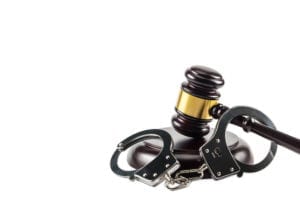 The Supreme Court continued in relevant part: In Henderson, the Court reaffirmed Delgado. 208 N.J. at 252. To guard against confirmatory feedback, the Court required law enforcement to record a witness’ statement of confidence “in the witness’ own words before any possible feedback.” Id. at 254. Henderson added that “if an eyewitness’ confidence was not properly recorded soon after an identification procedure, and evidence revealed that the witness received confirmatory feedback,” trial judges could bar any testimony at trial about the witness’ level of confidence. Id. at 298. The Court also asked that the model charge on eyewitness identification be revised. Ibid. The Court adopted an enhanced set of instructions in 2012. See Identification Charge.
The Supreme Court continued in relevant part: In Henderson, the Court reaffirmed Delgado. 208 N.J. at 252. To guard against confirmatory feedback, the Court required law enforcement to record a witness’ statement of confidence “in the witness’ own words before any possible feedback.” Id. at 254. Henderson added that “if an eyewitness’ confidence was not properly recorded soon after an identification procedure, and evidence revealed that the witness received confirmatory feedback,” trial judges could bar any testimony at trial about the witness’ level of confidence. Id. at 298. The Court also asked that the model charge on eyewitness identification be revised. Ibid. The Court adopted an enhanced set of instructions in 2012. See Identification Charge.
In response to Delgado and Henderson, the Criminal Practice Committee in 2012 proposed a court rule on recording requirements for identification procedures, which the Court adopted later that year. The Court reviews Rule 3:11 in its current form. With the proliferation of recording devices in recent years, the Rule’s aim is easier to achieve today than in the past. Police departments of all sizes now have access to devices that can electronically record and preserve identification procedures. And departments already use recording equipment to preserve identification procedures consistent with the requirements of Rule 3:17(a). Electronic recordings are preferable for identification procedures as well. To more clearly state the order of preference for preserving an identification procedure, Rule 3:11(b) should be revised along the following lines: Officers are to record all identification procedures electronically in video or audio format. Preferably, an audio-visual record should be created. If it is not feasible to make an electronic recording, officers are to contemporaneously record the identification procedure in writing and include a verbatim account of all exchanges between an officer and a witness. If a contemporaneous, verbatim written account cannot be made, officers are to prepare a detailed summary of the identification as soon as practicable.
All of this qualifying language from the Court will have no effect on police that seek to influence the results of an identification. Allowing audio recording as a substitute to video denies fact-finders the ability to observe demeanor and both subtle and intentional cues give by police to those making an identification. Allowing written accounts as a substitute to audio denies the fact-finder of any insight into what actually occurred during an identification. In the age of smart phones, it is difficult to imagine a situation in which no one in an entire police department has access to a recording device.
